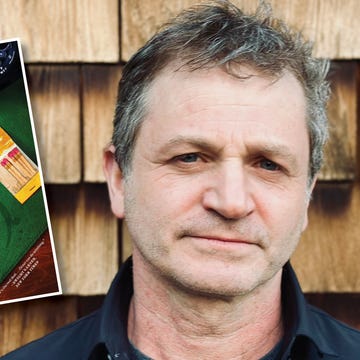Disneyland: It’s both the “Happiest Place on Earth” and one of Alta Journal’s picks for a wonder of California. A pilgrimage to this world-famous theme park has become a wish (upon a star) for children of all ages and Super Bowl winners alike. How did this plot of land in Anaheim become an American icon? Dr. Andi Stein, a Cal State Fullerton professor who teaches a class on the influence of the Walt Disney Company, joins Alta Live to regale us with the history and lore of Disneyland. Grab your mouse ears and join us on this virtual visit to a California wonder that has captured the imagination of the world for over 70 years.
About the guest:
Dr. Andi Stein is a professor in the Department of Communications at Cal State Fullerton, where she teaches courses about entertainment and tourism communications. Her Deconstructing Disney class examines the influence of the Walt Disney Company on entertainment and society. Prior to becoming a professor, Stein was a journalist and public relations practitioner in the San Francisco Bay Area. She is the author of Why We Love Disney: The Power of the Disney Brand and Attracting Attention: Promotion and Marketing for Tourism Attractions. She is also coauthor of An Introduction to the Entertainment Industry and News Writing in a Multimedia World. Stein has a BA from George Washington University, an MA from the University of North Carolina at Chapel Hill, and a PhD from the University of Oregon.
Here are some notable quotes from today’s event:
- On how the idea for Disneyland materialized: “The story goes that Walt Disney had two daughters—Diane and Sharon—and on the weekends he would get to play with the girls and he would usually take them to Griffith Park in Los Angeles. He would sit on a bench in the park and they would ride the carousel, and he would sit and watch them. He would be bored out of his mind because he didn’t have anything to do other than watch the girls on the carousel. And he started thinking, why is there no place where parents can go with their children and have the same exciting experience that they have?… He got an idea that maybe he should create an amusement park that would be family friendly and where the whole family could come and be entertained.”
- On the impact of Disneyland on California: “It wouldn’t necessarily be so much that films might be different, but certainly, the theme park industry would be different. Now we have Universal Park in Universal Studios in Hollywood. There’s SeaWorld in San Diego; there’s Legoland in Escondido. I don’t know that any of that would be here if it wasn’t for Disneyland, because that kind of set the ball rolling with the theme park industry.”
- On the appeal of Disneyland: “When I walk through the gate, I’m not thinking about work, I’m not thinking about paying bills, I’m not thinking about whatever stressors I have. I’m thinking about how long it’s going to take for me to get on my favorite ride, what am I going to eat for lunch, and what they are selling today in the shops. You get immersed in this world of fantasy for a few hours, or, in some cases, a few days. And it does make you feel good. It makes you feel all warm and fuzzy and happy.”
- On what Disney would think of the park today: “I think he would be blown away. I think he’d be really, really proud as well, because he was somebody who was always looking to the future, always looking to what’s the next innovative thing that we can do. He did that with his films. He certainly did it with the theme park. A lot of people who are upset with all the different things that the company has purchased say this is not Walt’s park, but Walt was all about innovation and technology. And Walt himself might be really pleased that the park has grown into what it has and that the company has grown into what it has.”
Check out these links to some of the topics brought up this week.
- Read “Disneyland: Mouseopolis—a Fable,” by Ed Leibowitz.
- Read “The Happiest Cats on Earth,” by Matt Smith.
- Check out Why We Love Disney: The Power of the Disney Brand, by Stein.
- Watch the History Channel’s How Disney Built America, a six-part series featuring Stein.
- Read more of Stein’s work.•











